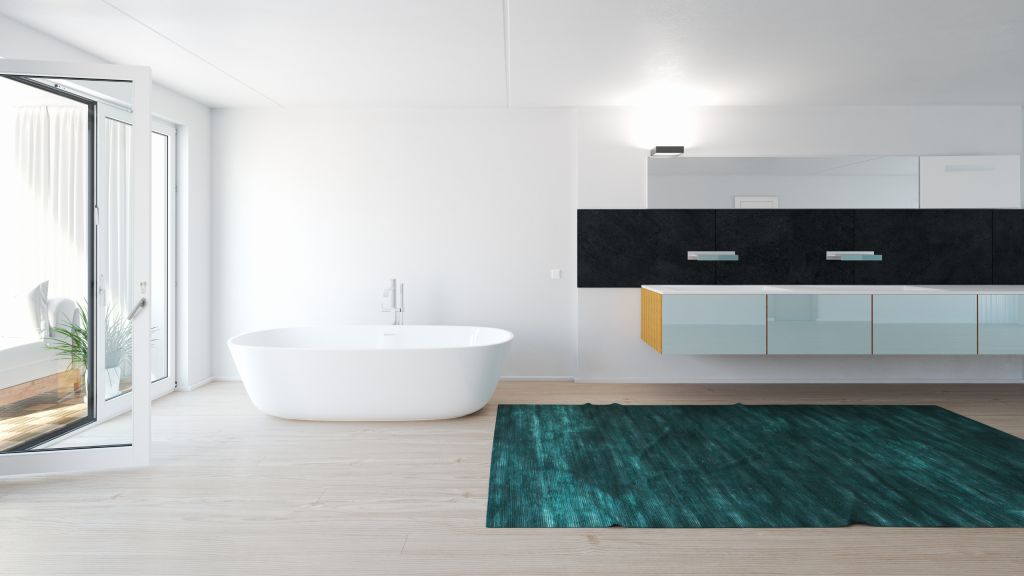Is your bathtub showing wear and tear, making your bathroom feel outdated? Reglazing could provide the perfect solution to breathe new life into your space without the inconvenience and expense of a full renovation. Before delving into this project, you must acquaint yourself with the necessary supplies and procedures for reglazing. This comprehensive guide will walk you through the common materials and techniques involved in reglazing, addressing frequently asked questions, and empowering you to make well-informed decisions. Say goodbye to tub troubles! Haverford Bathtub Refinishing is your go-to for reglazing services. Reach out now to transform your tub!
What Surfaces Can Be Reglazed?
Reglazing isn’t limited to bathtubs; it can also rejuvenate sinks, tiles, and countertops, regardless of their material composition. Whether it’s porcelain, fiberglass, or ceramic, reglazing can restore their original shine, giving them a fresh and renewed appearance. This makes reglazing a cost-effective alternative to replacement, saving you both money and the significant time and effort required for demolition and installation. With reglazing, you can transform dull surfaces into vibrant focal points in your home with minimal hassle, ensuring maximum satisfaction with the revitalization process.
Is Reglazing the Same as Using Epoxy?
While epoxy coatings are commonly used in reglazing, it’s important to note that reglazing and epoxy are not interchangeable terms. Reglazing involves applying a fresh coating to enhance a surface’s appearance and longevity. Epoxy is one option in this process, alongside polyurethane and acrylic coatings. Each material offers distinct advantages, such as toughness, usability, chemical resistance, and moisture resistance. By understanding the range of available materials, you can tailor your reglazing approach to best suit your preferences and requirements, ensuring optimal results in both aesthetics and durability.
Common Reglazing Materials
- Epoxy Coatings: Known for their durability and resistance to stains, chemicals, and abrasions, epoxy coatings create a strong bond with the bathtub surface, producing a smooth, glossy finish that can last for years with proper maintenance.
- Polyurethane Coatings: Renowned for their exceptional adhesion and longevity, polyurethane coatings provide a resilient protective layer that can withstand chipping, peeling, and fading, making them an ideal choice for high-traffic areas like bathtubs and countertops.
- Acrylic Coatings: Highly versatile and cost-effective, acrylic coatings offer a vast array of colors and finishes, enabling you to customize your bathtub to match your individual style preferences and ensure a personalized aesthetic.
10 Different Techniques and Materials Used in Bathtub Reglazing
- Surface Preparation: Thorough cleaning and etching are crucial before applying the new coating. This involves removing dirt, grime, or existing coatings to ensure optimal adhesion. Etching with an acidic solution creates a textured surface for better bonding.
- Masking: Protecting surrounding areas from overspray is essential. This involves carefully covering fixtures, tiles, and nearby surfaces with tape and plastic sheeting.
- Repairing Imperfections: Any chips, cracks, or damage must be filled using epoxy or acrylic filler, ensuring a smooth surface for the new coating to adhere to.
- Sanding: Smoothing the surface through sanding removes any rough spots or imperfections, promoting better adhesion of the reglazing material.
- Priming: A bonding primer enhances adhesion between the old surface and the new coating, improving durability.
- Spraying: The reglazing material is applied evenly across the bathtub surface using a spray gun, ensuring uniform coverage and a smooth finish.
- Curing: Allowing the coating to dry and cure for the recommended time is crucial for maximum durability and adhesion.
- Buffing: After curing, buffing the surface helps attain a glossy, flawless finish, highlighting the bathtub’s appearance.
- Sealing: A clear topcoat protects the reglazed surface from scratches and stains, prolonging its lifespan and aesthetic appeal.
- Final Inspection: A thorough inspection is conducted to check for imperfections, with necessary touch-ups to ensure a flawless finish.
Frequently Asked Questions
Q: How long does the reglazing process take?
A: The reglazing process typically takes one to two days, depending on the condition of the bathtub and the materials used.
Q: What is the lifespan of a reglazed bathtub?
A: A reglazed bathtub can last 10-15 years or even longer with proper care and maintenance.
Q: Is it possible to reglaze my bathtub myself?
A: While DIY reglazing kits are available, it is recommended that you opt for professional reglazing services. Professionals can ensure proper application and enhanced durability, guaranteeing superior results.
Conclusion
Reglazing offers a cost-effective and convenient way to revitalize your bathtub, enhancing the entire atmosphere of your bathroom. With a solid understanding of the available materials and methods, you can confidently embark on your reglazing project, recognizing it as a wise investment in your home’s appeal and value. Seize this opportunity to transform your bathtub today and enjoy a refreshed look that will endure for years.

